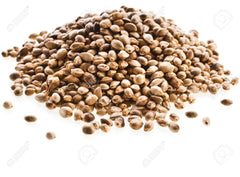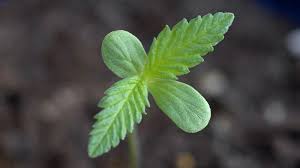Cultivation of the hemp plant, which contains CBD, is divided into five main stages, generally running from March to October.
These include germination, growth, flowering, harvesting and drying, all of which are briefly described in the following paragraphs. Lovers of CBD flowers, CBD resin, CBD oils, CBD cosmetics and CBD e-liquids, this article is for you.
Germination
Germination is the very first stage when hemp is grown from seed (which also contains CBD). It can only occur if external conditions are favorable (humidity, temperature, oxygen, etc.).
Internal factors (maturity, viability, dormancy) also play a role at this stage of cultivation.
 It's best to select the firmest, darkest seeds. It may then be necessary to lift dormancy. Dormancy is a biological mechanism that prevents the seed from germinating during the winter season, so that it doesn't die as a result of the harsh winter weather.
It's best to select the firmest, darkest seeds. It may then be necessary to lift dormancy. Dormancy is a biological mechanism that prevents the seed from germinating during the winter season, so that it doesn't die as a result of the harsh winter weather.
Once the seed has sprouted, it's time to cover it with potting soil and plant it in the ground, which should remain moist but not soggy.
Hemp seeds are used by Mama Kana to make her delicious CBD oils, available in CBD 2.5%, CBD 5%, CBD 10% and CBD 20%.
Growth and flowering
The "stretching" period: This is when the hemp plant, which contains CBD, prepares to flower (here come the CBD flowers and CBD resin). This can double or triple its size, in preparation for the arrival of CBD flowers. This sudden growth of the plant, which lasts 1 to 2 weeks on average, enables it to receive more light, for ever more CBD.
The potency and duration of this rush, as well as CBD and THC levels, are in fact entirely determined by the plant's genetics.

This "stretching" period is crucial for the hemp grower, as it determines the size and final structure of the plant and, ultimately, its CBD and THC content. If he doesn't manage to provide the plant with the conditions it needs to flourish, he's bound to get a meagre crop of CBD flowers.
After this period, senescence generally sets in.
Senescence: Yellowing of the leaves during flowering is generally due to senescence. This is a perfectly normal phenomenon, part of the hemp plant's life cycle.
Contrary to popular belief, these yellow leaves do not exhaust the plant. On the contrary, they are a source of energy. It is therefore important for the hemp grower not to cut these leaves, unless they are irreparably damaged.
Once senescence is complete, abscission occurs, with the leaves falling off.
Harvesting
CBD flowers are usually harvested in October.
When the CBD flowers are swollen, the pistils partly oxidized (browned) and the trichomes milky and amber, it's time to harvest the CBD flowers.
It's precisely at dusk that the hemp plant's potency is at its weakest. It grows again during the night, peaking just before dawn. When the first rays of sunlight penetrate the plant, the cannabinoids, including CBD, THC and CBG, deteriorate again.
The optimum time to harvest CBD flowers is therefore just before dawn, or after a period of darkness of at least a dozen hours.
Drying
This is the period immediately after the plants have been cut, during which the CBD flowers are hung upside down in a cool, dark, airy room to dry.
CBD flower drying lasts an average of 1 to 2 weeks, it being understood that a short drying time gives the plant a bitter character, while a longer drying time allows the expression of sweeter and fruitier aromas, for a better CBD.
When the branches break clearly, but the CBD flowers remain supple, it's time to manicure the CBD flowers (remove the leaves) and then curing them (put them in jars in a cool, dark place).

